![有限元方法的數學理論(第3版) [The Mathematical Theory of Fintite Element Methods Third Edition] epub pdf mobi txt 電子書 下載](https://pic.tinynews.org/10762453/36da39a8-76c6-48d7-8808-a7b9f4a1885a.jpg)
有限元方法的數學理論(第3版) [The Mathematical Theory of Fintite Element Methods Third Edition] epub pdf mobi txt 電子書 下載 2025
有限元方法的數學理論(第3版) [The Mathematical Theory of Fintite Element Methods Third Edition] epub pdf mobi txt 電子書 下載 2025
簡體網頁||繁體網頁
下載連結1
下載連結2
下載連結3
發表於2025-04-06
商品介绍
有限元方法的數學理論(第3版) [The Mathematical Theory of Fintite Element Methods Third Edition] epub pdf mobi txt 電子書 下載 2025
相关書籍
書籍描述
內容簡介
This edition contains four new sections on the following topics: the BDDC domain decomposition preconditioner (Section 7.8), a convergent adaptive algorithm (Section 9.5), interior penalty methods (Section 10.5) and Poincare-Friedrichs inequalities for piecewise Wp1 functions (Section 10.6).We have made improvements throughout the text, many of which were suggested by colleagues, to whom we are grateful. New exercises have been added and the list of references has also been expanded and updated.內頁插圖
目錄
series prefacepreface to the third edition
preface to the second edition
preface to the first edition
0 basic concepts
0.1 weak formulation of boundary value problems
0.2 ritz-galerkin approximation
0.3 error estimates
0.4 piecewise polynomial spaces - the finite element method
0.5 relationship to difference methods
0.6 computer implementation of finite element methods
0.7 local estimates
0.8 adaptive approximation
0.9 weighted norm estimates
0.x exercises
1 sobolev spaces
1.1 review of lebesgue integration theory
1.2 generalized (weak) derivatives
1.3 sobolev norms and associated spaces
1.4 inclusion relations and sobolev's inequality
1.5 review of chapter 0
1.6 trace theorems
1.7 negative norms and duality
1.x exercises
2 variational formulation of elliptic boundary value problems
2.1 inner-product spaces
2.2 hilbert spaces
2.3 projections onto subspaces
2.4 riesz representation theorem
2.5 formulation of symmetric variational problems
2.6 formulation of nonsymmetric variational problems
2.7 the lax-milgram theorem
2.8 estimates for general finite element approximation
2.9 higher-dimensional examples
2.x exercises
3 the construction of a finite element space
3.1 the finite element
3.2 triangular finite elements
the lagrange element
the hermite element
the argyris element
3.3 the interpolant
3.4 equivalence of elements
3.5 rectangular elements
tensor product elements
the serendipity element
3.6 higher-dimensional elements
3.7 exotic elements
3.x exercises
4 polynomial approximation theory in sobolev spaces
4.1 averaged taylor polynomials
4.2 error representation
4.3 bounds for riesz potentials
4.4 bounds for the interpolation error
4.5 inverse estimates
4.6 tensor. product polynomial approximation
4.7 isoparametric polynomial approximation
4.8 interpolation of non-smooth functions
4.9 a discrete sobolev inequality
4.x exercises
5 n-dimensional variational problems
5.1 variational formulation of poisson's equation
5.2 variational formulation of the pure neumann problem
5.3 coercivity of the variational problem
5.4 variational approximation of poisson's equation
5.5 elliptic regularity estimates
5.6 general second-order elliptic operators
5.7 variational approximation of general elliptic problems
5.8 negative-norm estimates
5.9 the plate-bending biharmonic problem
5.x exercises
6 finite element multigrid methods
6.1 a model problem
6.2 mesh-dependent norms
6.3 the multigrid algorithm
6.4 approximation property
6.5 w-cycle convergence for the kth level iteration
6.6 ]/-cycle convergence for the kth level iteration
6.7 full multigrid convergence analysis and work estimates
6.x exercises
7 additive schwarz preconditioners
7.1 abstract additive schwarz framework
7.2 the hierarchical basis preconditioner
7.3 the bpx preconditioner
7.4 the two-level additive schwarz preconditioner
7.5 nonoverlapping domain decomposition methods
7.6 the bps preconditioner
7.7 the neumann-neumann preconditioner
7.8 the bddc preconditioner
7.x exercises
8 max-norm estimates
8.1 main theorem
8.2 reduction to weighted estimates
8.3 proof of lemma 8.2.6
8.4 proofs of lemmas 8.3.7 and 8.3.11
8.5 lp estimates (regular coefficients)
8.6 lp estimates (irregular coefficients)
8.7 a nonlinear example
8.x exercises
9 adaptive meshes
9.1 a priori estimates
9.2 error estimators
9.3 local error estimates
9.4 estimators for linear forms and other norms
9.5 a convergent adaptive algorithm
9.6 conditioning of finite element equations
9.7 bounds on the condition number
9.8 applications to the conjugate-gradient method
9.x exercises
10 variational crimes
10.1 departure from the framework
10.2 finite elements with interpolated boundary conditions
10.3 nonconforming finite elements
10.4 isoparametric finite elements
10.5 discontinuous finite elements
10.6 poincare-friedrichs inequalitites for piecewise w1p functions
10.x exercises
11 applications to planar elasticity
11.1 the boundary value problems
11.2 weak formulation and korn's inequality
11.3 finite element approximation and locking
11.4 a robust method for the pure displacement problem
11.x exercises
12 mixed methods
12.1 examples of mixed variational formulations
12.2 abstract mixed formulation
12.3 discrete mixed formulation
12.4 convergence results for velocity approximation
12.5 the discrete inf-sup condition
12.6 verification of the inf-sup condition
12.x exercises
13 iterative techniques for mixed methods
13.1 iterated penalty method
13.2 stopping criteria
13.3 augmented lagrangian method
13.4 application to the navier-stokes equations
13.5 computational examples
13.x exercises
14 applications of operator-interpolation theory
14.1 the real method of interpolation
14.2 real interpolation of sobolev spaces
14.3 finite element convergence estimates
14.4 the simultaneous approximation theorem
14.5 precise characterizations of regularity
14.x exercises
references
index
精彩書摘
We will take this opportunity to philosophize about some power-ful characteristics of the finite element formalism for generating discreteschemes for approximating the solutions to differential equations. Being based on the variational formulation of boundary value problems, it is quite systematic, handling different boundary conditions with ease; one simply re-places infinite dimensional spaces with finite dimensional subspaces. What results, as in (0.5.3), is the same as a finite difference equation, in keeping with the dictum that different numerical methods are usually more similarthan they are distinct. However, we were able to derive very quickly the convergence properties of the finite element method. Finally, the notation for the discrete scheme is quite compact in the finite element for mulation.This could be utilized to make coding the algorithm much more efficient if only the appropriate computer language and compiler were available. Thislatter characteristic of the finite element method is one that has not yet been exploited extensively, but an initial attempt has been made in the sys-tem fec (Bagheri, Scott & Zhang 1992). (One could also argue that finiteele ment practitioners have already taken advantage of this by developingtheir own "languages" through extensive software libraries of their own, but this applies equally well to the finite-difference practitioners.)......
前言/序言
Mathematics is playing an ever more important role in the physical and biological sciences, provoking a blurring of boundaries between scientific disciplines and a resurgence of interest in the modern as well as the clas-sical techniques of applied mathematics. This renewal of interest, both inresearch and teaching, has led to the establishment of the series Texts in Applied Mathematics (TAM).The development of new courses is a natural consequence of a high level of excitement on the research frontier as newer techniques, such asnumerical and symbolic computer systems, dynamical systems, and chaos,mix with and reinforce the traditional methods of applied mathematics.Thus, the purpose of this textbook series is to meet the current and future needs of these advances and to encourage the teaching of new courses.
TAM will publish textbooks suitable for use in advanced undergraduateand beginning graduate courses, and will complement the Applied Mathe-matical Sciences (AMS) series, which will focus on advanced textbooks andresearch-level monographs.
有限元方法的數學理論(第3版) [The Mathematical Theory of Fintite Element Methods Third Edition] epub pdf mobi txt 電子書 下載 2025
有限元方法的數學理論(第3版) [The Mathematical Theory of Fintite Element Methods Third Edition] 下載 epub mobi pdf txt 電子書有限元方法的數學理論(第3版) [The Mathematical Theory of Fintite Element Methods Third Edition] pdf 下載 mobi 下載 pub 下載 txt 電子書 下載 2025
有限元方法的數學理論(第3版) [The Mathematical Theory of Fintite Element Methods Third Edition] mobi pdf epub txt 電子書 下載 2025
有限元方法的數學理論(第3版) [The Mathematical Theory of Fintite Element Methods Third Edition] epub pdf mobi txt 電子書 下載讀者評價
比較高深,估計比較難搞定
評分喜歡這書,對於計算數學方嚮來說值得擁有,並且書沒有味道,正版,很好的哈
評分不錯的數學書,值得購買。
評分老師推薦的
評分學習有限元可以買的一本書,介紹有限元數學基礎。
評分非常好非常好非常好非常好非常好
評分不錯的數學書,值得購買。
評分大緻看看目錄,是偏嚮理論方麵的,留著以後看。世圖SPRINGER的書定價越來越貴瞭。
評分經典的書,正版,很喜歡,希望仔細讀
有限元方法的數學理論(第3版) [The Mathematical Theory of Fintite Element Methods Third Edition] epub pdf mobi txt 電子書 下載 2025
有限元方法的數學理論(第3版) [The Mathematical Theory of Fintite Element Methods Third Edition] epub pdf mobi txt 電子書 下載 2025
分享鏈接
相关書籍
-
 預測理論與方法 epub pdf mobi txt 電子書 下載
預測理論與方法 epub pdf mobi txt 電子書 下載 -
![儀器科學與技術學科研究生係列教學參考書:視覺測量原理與方法 [The Principle of Vision Metrology] pdf epub mobi 電子書 下載](/static/pix.jpg) 儀器科學與技術學科研究生係列教學參考書:視覺測量原理與方法 [The Principle of Vision Metrology] epub pdf mobi txt 電子書 下載
儀器科學與技術學科研究生係列教學參考書:視覺測量原理與方法 [The Principle of Vision Metrology] epub pdf mobi txt 電子書 下載 -
 高等學校教材:物理化學簡明教程 epub pdf mobi txt 電子書 下載
高等學校教材:物理化學簡明教程 epub pdf mobi txt 電子書 下載 -
 漢譯世界學術名著叢書:自然哲學概論 epub pdf mobi txt 電子書 下載
漢譯世界學術名著叢書:自然哲學概論 epub pdf mobi txt 電子書 下載 -
 與貓共舞:科研管理的智慧 epub pdf mobi txt 電子書 下載
與貓共舞:科研管理的智慧 epub pdf mobi txt 電子書 下載 -
![華章數學原版精品係列:概率論基礎教程(英文版·第8版) [A First Course in Probability] pdf epub mobi 電子書 下載](/static/pix.jpg) 華章數學原版精品係列:概率論基礎教程(英文版·第8版) [A First Course in Probability] epub pdf mobi txt 電子書 下載
華章數學原版精品係列:概率論基礎教程(英文版·第8版) [A First Course in Probability] epub pdf mobi txt 電子書 下載 -
 ANSYS電磁場分析(第2版 附DVD光盤) epub pdf mobi txt 電子書 下載
ANSYS電磁場分析(第2版 附DVD光盤) epub pdf mobi txt 電子書 下載 -
 量子場論 epub pdf mobi txt 電子書 下載
量子場論 epub pdf mobi txt 電子書 下載 -
 MATLAB 2015從入門到精通 epub pdf mobi txt 電子書 下載
MATLAB 2015從入門到精通 epub pdf mobi txt 電子書 下載 -
 高維數據統計學:方法、理論和應用 epub pdf mobi txt 電子書 下載
高維數據統計學:方法、理論和應用 epub pdf mobi txt 電子書 下載 -
 從量子到宇宙 顛覆人類認知的科學之旅 epub pdf mobi txt 電子書 下載
從量子到宇宙 顛覆人類認知的科學之旅 epub pdf mobi txt 電子書 下載 -
 理科類係列教材:數學史通論(第2版 雙語版) epub pdf mobi txt 電子書 下載
理科類係列教材:數學史通論(第2版 雙語版) epub pdf mobi txt 電子書 下載 -
![生態學名著譯叢:生態模型基礎(第3版) [Fundamentals of Ecological Modelling] pdf epub mobi 電子書 下載](/static/pix.jpg) 生態學名著譯叢:生態模型基礎(第3版) [Fundamentals of Ecological Modelling] epub pdf mobi txt 電子書 下載
生態學名著譯叢:生態模型基礎(第3版) [Fundamentals of Ecological Modelling] epub pdf mobi txt 電子書 下載 -
 群論及其在物理學中的應用 epub pdf mobi txt 電子書 下載
群論及其在物理學中的應用 epub pdf mobi txt 電子書 下載 -
 CASIO fx-5800P公路測量與試驗檢測程序及計算案例 epub pdf mobi txt 電子書 下載
CASIO fx-5800P公路測量與試驗檢測程序及計算案例 epub pdf mobi txt 電子書 下載 -
 弦論和M理論導論 epub pdf mobi txt 電子書 下載
弦論和M理論導論 epub pdf mobi txt 電子書 下載 -
 材料力學(英文版·原書第7版) epub pdf mobi txt 電子書 下載
材料力學(英文版·原書第7版) epub pdf mobi txt 電子書 下載 -
![繩圈的數學 [Mathematics of String Figures] pdf epub mobi 電子書 下載](/static/pix.jpg) 繩圈的數學 [Mathematics of String Figures] epub pdf mobi txt 電子書 下載
繩圈的數學 [Mathematics of String Figures] epub pdf mobi txt 電子書 下載 -
 高等學校教材:基礎物理化學 epub pdf mobi txt 電子書 下載
高等學校教材:基礎物理化學 epub pdf mobi txt 電子書 下載 -
 地質災害治理工程設計 epub pdf mobi txt 電子書 下載
地質災害治理工程設計 epub pdf mobi txt 電子書 下載




![儀器科學與技術學科研究生係列教學參考書:視覺測量原理與方法 [The Principle of Vision Metrology] pdf epub mobi 電子書 下載](https://pic.tinynews.org/10881154/d63c67d5-a0f1-4a9e-b6cb-918b03d7ca08.jpg)

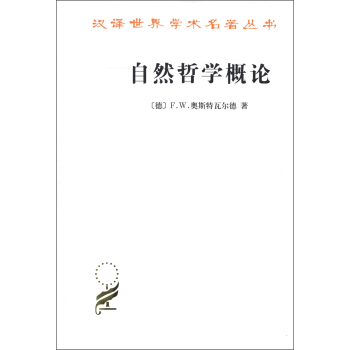
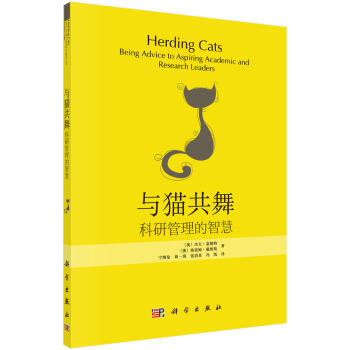
![華章數學原版精品係列:概率論基礎教程(英文版·第8版) [A First Course in Probability] pdf epub mobi 電子書 下載](https://pic.tinynews.org/11577087/546335beN531b7431.jpg)


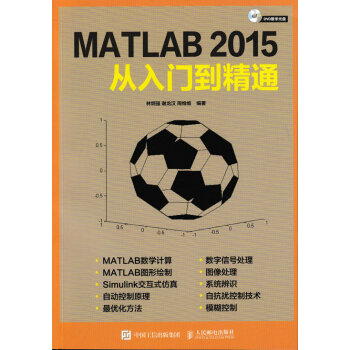
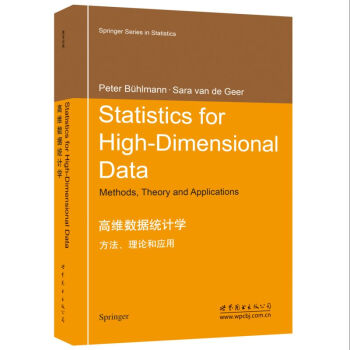

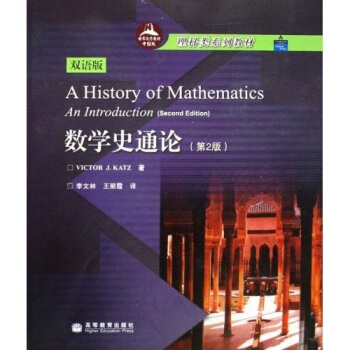
![生態學名著譯叢:生態模型基礎(第3版) [Fundamentals of Ecological Modelling] pdf epub mobi 電子書 下載](https://pic.tinynews.org/10000904/5671059dN225ab2e1.jpg)


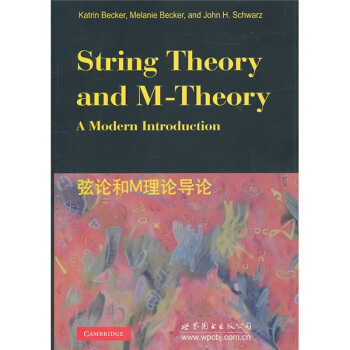
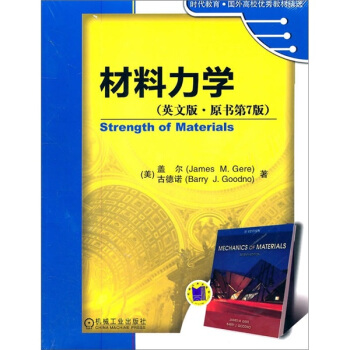
![繩圈的數學 [Mathematics of String Figures] pdf epub mobi 電子書 下載](https://pic.tinynews.org/10825593/80ea2faf-ac04-4ea8-b9f6-b1f3db77305f.jpg)

